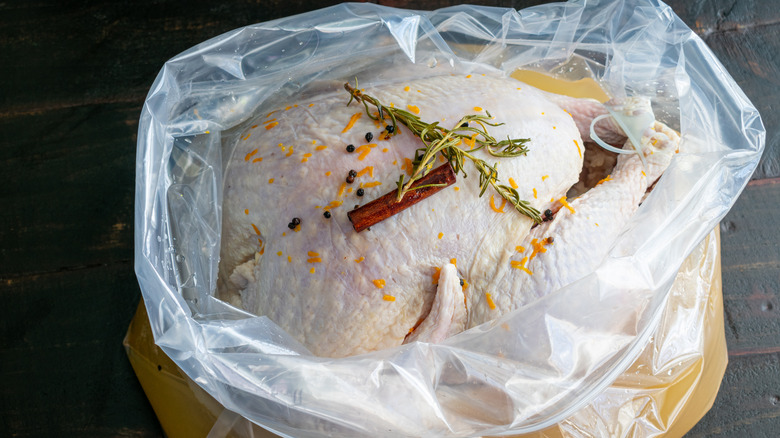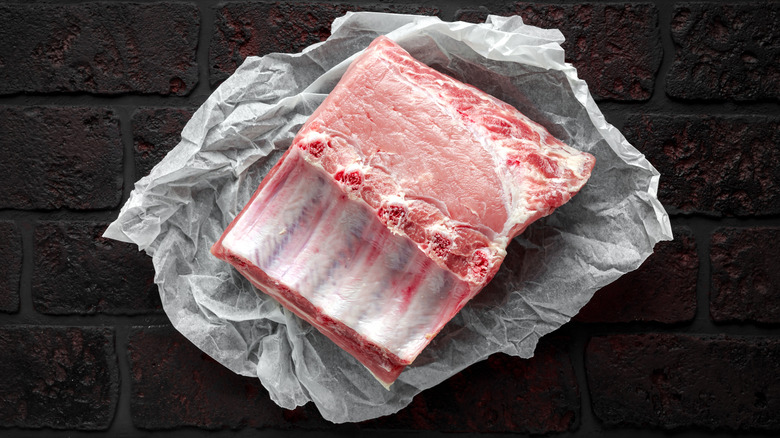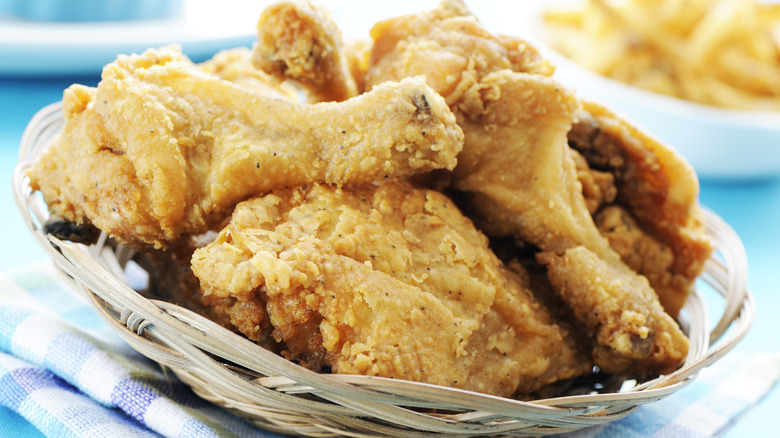What Are The Benefits Of Dry-Brining Meat Vs. Wet-Brining?
Brining is a time-honored culinary tradition around the globe, both for preserving food and for boosting its texture. It's also really caught on in the last two decades or so in America. Though you can do it year-round, the first thing that likely came to mind when you saw the term is Thanksgiving, when online pictures abound of turkeys in refrigerator crisper drawers filled with water, salt, stock, and aromatics. This process is, for obvious reasons, known as wet-brining. And even if it's not November, you can brine plenty of meats besides Thanksgiving turkey.
The thing is, if you're brining your Thanksgiving turkey, you're probably doing it wrong. It's not just that wet-brining isn't the only option to achieve the results you're going for, it's that it may not even be the best choice. In order to get the best results out of brining turkey and a lot of other meats, you really have to go with a dry brine instead. There are a whole bunch of benefits to the process, but the biggest one is simple: Your meats will be a lot more flavorful. To understand why, you have to get into the science of it all.
How dry-brining preserves flavor
To be sure, a wet brine — which typically means leaving meat in a water and salt solution overnight — will take a dry meat and turn it juicy. Thanks to salt's ability to denature proteins, this leads to the meat absorbing both the salt and water, leading to a much juicier end product. The problem is the water in wet-brining gets retained during the cooking process, and ultimately dilutes the flavor of the meat itself. It's why a lot of wet-brined turkeys are juicy, but don't really taste like anything.
Where a wet brine consists primarily of water and salt, meanwhile, a dry brine leaves the water out of the process, covering the meat in a layer of salt. Obviously that solves the water dilution issue, but you might be thinking that the problem with, say, turkey, is how dry it can be, so dry-brining could only make it worse, right?
Turns out, thanks to science, that's not actually how it works at all. During dry-brining, the salt pulls the protein's natural moisture to the surface — but instead of dissipating, the salt and meat juices are then naturally reabsorbed, essentially leading to the meat being brined in its own juices. Some experts may not like the term "dry-brine," but it's indisputably a useful cooking method.
When to use wet-brining or dry-brining
With dry-brining, you don't even need to wash the salt off at the end of the process, because the salt also has the added effect of pulling moisture to the surface and creating a crispier skin. There's also the obvious fact that dry-brining is significantly less hassle and takes up less space than wet-brining. While wet-brining requires you to fill a vessel with the brine (most commonly crisper drawers), dry-brining has no such issues.
This is not to say all foods should be dry-brined rather than wet-brined. Wet-brining actually does have benefits associated with it. Fried chicken brining should always be wet instead of dry, because the brine itself becomes part of the crust that gets deep-fried. This is why the classic fried chicken brine is done with buttermilk rather than water: The flavor of the buttermilk winds up suffusing the dredge. For the same reason, you can also brine chicken in cola, pickle juice, or cider (among other options).
Ultimately, the benefits of wet-brining vs. dry-brining really depend on the protein you're working with. Like anything else in cooking, it's about knowing which method works best for which particular food.


